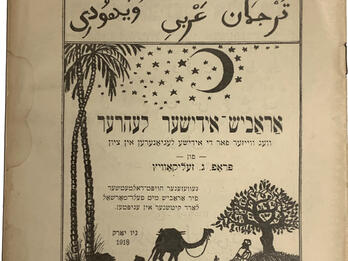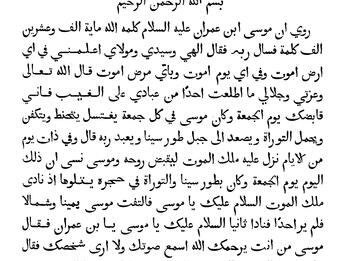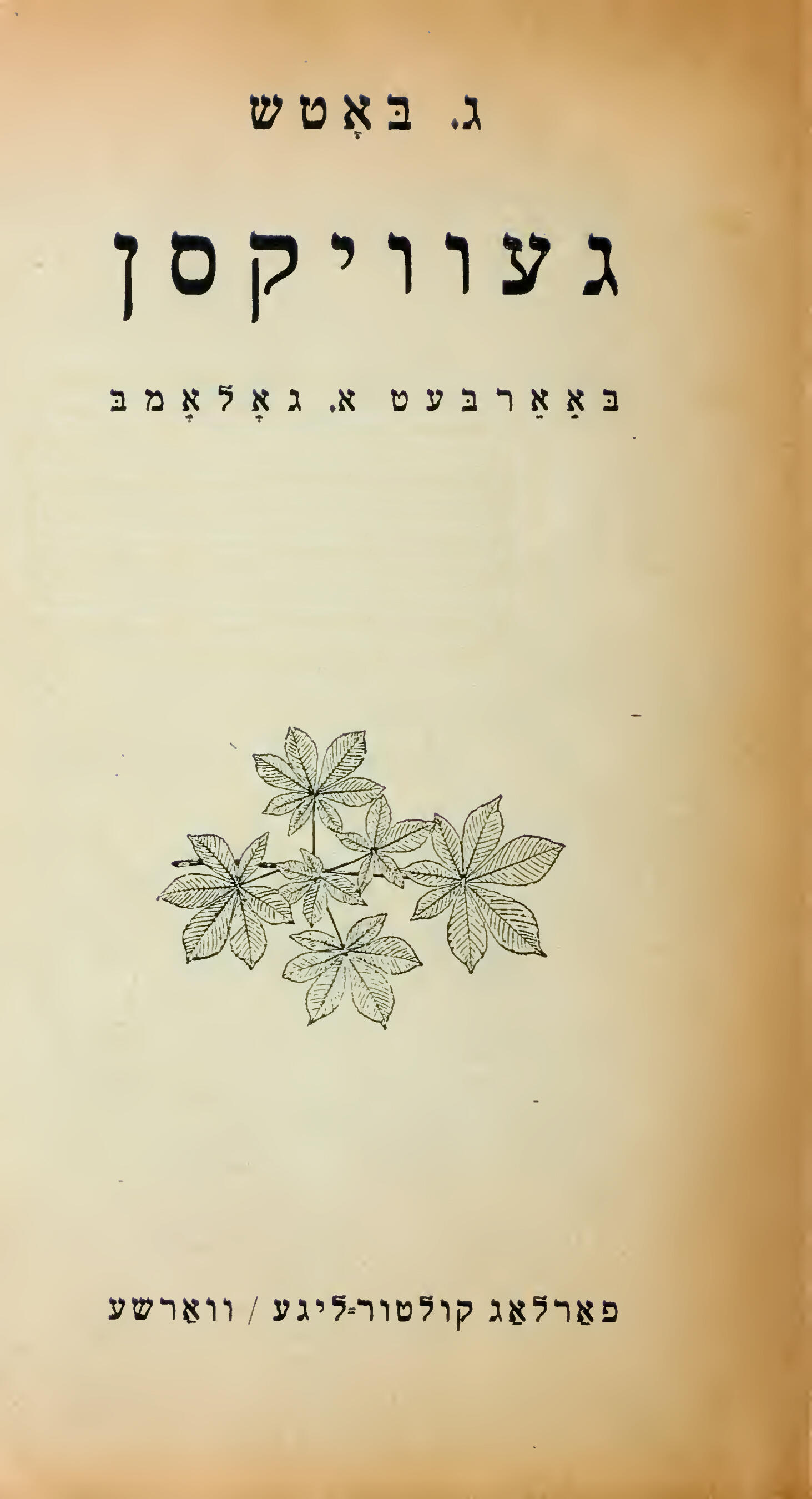Geviksn
Avrom Golomb
1919
Credits
G. Bocz, Geviksn: Baarbet fun Avrom Golomb (Warsaw: Kulter-lige, 1919). Republished 1922. Courtesy The Yiddish Book Center, and Mikah Dusette.
Published in: The Posen Library of Jewish Culture and Civilization, vol. 7.
You may also like
Specific Hebrew Pedagogical Problems
Reflections on the Purity, or Otherwise, of the Bene Israel Race in India
Chassidiana

Arabic-Yiddish Teacher: A Guide for the Jewish Legionnaires in the Land of Zion
The Face of East European Jewry

The Death of Moses
Creator Bio
Avrom Golomb
Born in Stravenik in the Russian Empire (today in Lithuania) to a religious family, Avrom Golomb attended a Russian gymnasium in Vilna while studying at the Rameyles Yeshiva. Drawn away from traditional religiosity, in 1907, Golomb enrolled in a pedagogical training course offered by the Society for the Promotion of Culture Among the Jews of Russia (OPE) and became a teacher. During and after World War I, he threw himself into Yiddishist activism and educational work, becoming a pioneer of Yiddish textbook production for the Kiev-centered Kultur-Lige, particularly for proper Yiddish-language education in the natural sciences. In 1921, Golomb returned to Vilna to direct the Yiddishist Jewish Teacher’s Seminary. In interwar Poland, he became a leading innovator in Yiddishist pedagogical and educational theory and a staunch champion of diasporism and maximalist cultural Yiddishism, though he also began to worry that Polish Jewry’s future was grim and that Polish Jews lacked the psychic wherewithal to face what was coming. Chased out of Poland under suspicion of communism in 1932, Golomb taught in Palestine from 1932 to 1938, then at the Y. L. Peretz School in Winnipeg, and from 1944 to 1964, he directed the Y. L. Peretz School in Mexico City. He published, primarily in Yiddish, books and articles on Jewish educational pedagogy, Jewish culture, the natural sciences, and the centrality of Jewish languages (i.e., Hebrew and Yiddish).
You may also like
Specific Hebrew Pedagogical Problems
Reflections on the Purity, or Otherwise, of the Bene Israel Race in India
Chassidiana

Arabic-Yiddish Teacher: A Guide for the Jewish Legionnaires in the Land of Zion
The Face of East European Jewry




